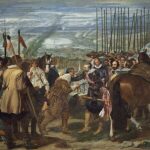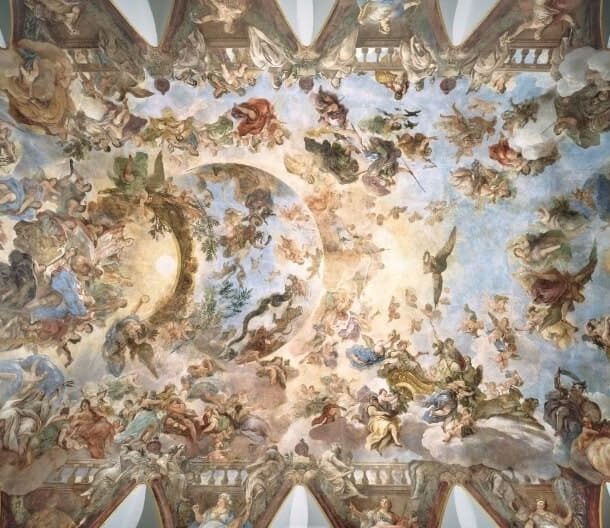
The Surrender of Breda, a work by Velázquez, is incorrectly known as “The Spears”, when in fact halberds are depicted on the left-hand margin corresponding to the rebel provinces, while the tercio carries pikes. On 5 June 1625 the governor of Breda, Justino de Nassau, handed the keys of the city to the Genoese general in command of the tercios, Ambrosio Spinola. This victory was one of the most important ones, which is why the Sevillian master, the most prestigious painter at the Court, was called upon to decorate the Salón de Reinos. Numerous scholars have pointed out that this is not a typical war painting in which a victory is recreated, as there are neither triumphant generals nor humiliated armies. The victorious general, Spinola, affectionately receives the key from the defeated enemy, in a gesture that is almost more an announcement of the beginning of peace than of the end of the war, where the vanishing point of the composition is precisely the exchange of the key.
Collection: Images
Project: 5. Power and powers in the history of Europe: oligarchies, political participation and democracy., 6. Under a cloak of terror: violence and armed conflict in Europe.
Chronology: XVII
Scope: Secondary Education, Baccalaureate, University
Resource type: Image
Format: Oil on canvas (307,3 x 371,5 cm)
Source: Museo Nacional del Prado (Madrid)
Language: Spanish
Date: ca. 1635
Owner: Álvaro Romero González (Modernalia)
Identifier: P001172
Copyright: Museo del Prado (Madrid)
Abstract: Representation of the Surrender of Breda, a work that forms part, along with others, of the commemoration of a series of land and naval victories that were won by the armies of the Hispanic Monarchy during the first period of the Thirty Years' War (1621-30). These canvases were intended for the Salón de Reinos at the Buen Retiro Palace.
Image
Tags






